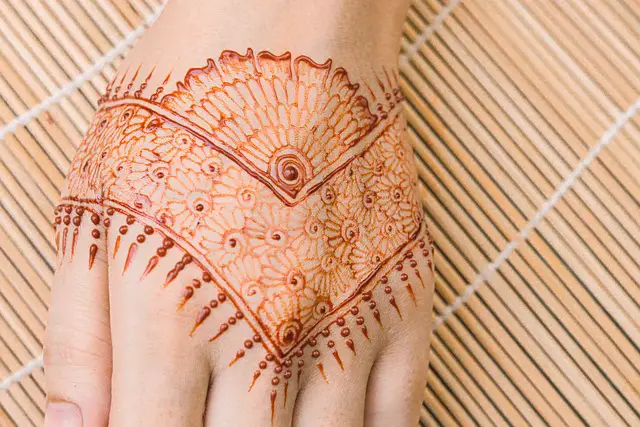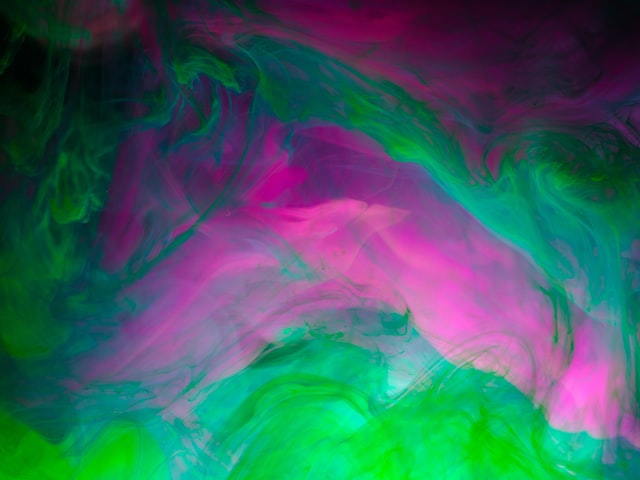Pigment ink and dye ink are two distinct types of printing inks that offer their own unique advantages. While dye-based inks provide vibrant colors with great accuracy, they may fade over time. Pigment-based inks produce a longer lasting image but can be more expensive to use.
What is pigment ink?
Pigment ink is made of tiny solid particles that are suspended in a liquid carrier. The particles are usually colorless but can be of any color. When the ink is applied to paper, the particles adhere to the surface and produce the desired color.
What is dye ink?
(Image by Mehndi Training Center from Pixabay )

Dye ink is a type of ink that contains dye particles suspended in a liquid carrier. The dye molecules are much smaller than the pigment particles found in pigment inks, which gives them the advantage of being able to penetrate the paper more easily. This results in sharper images and brighter colors when printing with dye inks. However, because the dye molecules are so small, they are also more susceptible to fading over time when exposed to light or other environmental factors.
The difference between pigment ink and dye ink
Pigment ink and dye ink are two types of ink commonly used in inkjet printers. They have different properties and are used for different purposes.
Pigment ink contains tiny particles of color pigment that are suspended in a liquid carrier. The pigment particles sit on top of the paper and are not absorbed into the fibers, resulting in a print that is more resistant to fading and water damage. Pigment ink is often used for printing documents and photographs that will be exposed to sunlight or water.
Dye ink, on the other hand, is made up of color dyes that are dissolved in a liquid carrier. When printed, the dye penetrates the fibers of the paper, resulting in a more vibrant and saturated print. Dye ink is often used for printing high-quality photographs and images where color accuracy and vibrancy are important.
One disadvantage of dye ink is that it can be more susceptible to fading and water damage compared to pigment ink. However, advances in dye ink technology have resulted in new types of dye ink that are more resistant to fading and water damage.
Overall, the choice between pigment ink and dye ink depends on the intended use of the printed material. Pigment ink is often used for printing documents and photographs that will be exposed to sunlight or water, while dye ink is used for high-quality photo printing and images where color accuracy and vibrancy are important.
Which one is better for printing?
If you are looking to do any kind of serious printing, whether for photographs or for other documents, you will want to use pigment ink rather than dye ink. Dye ink is less expensive and can be used in lower-end printers, but it is not as good at producing high-quality prints. Pigment ink is more expensive, but it produces much better prints.
What is the difference between pigment and dye ink for stamping?
When it comes to stamping, there are a few differences between pigment ink and dye ink.
Pigment ink is thicker and more opaque than dye ink, which means that it sits on top of the paper rather than being absorbed into it. This makes pigment ink ideal for stamping on dark or colored papers, as the color of the paper will not affect the color of the ink. Pigment ink also dries more slowly than dye ink, which allows for embossing powders to stick to the stamped image and create a raised, glossy effect.
Dye ink, on the other hand, is thinner and more translucent than pigment ink. It is absorbed into the fibers of the paper, which means that the color of the paper can affect the color of the ink. Dye ink dries quickly and is less likely to smudge than pigment ink. It is also easier to clean up after stamping with dye ink, as it can be easily wiped away with a damp cloth or baby wipe.
Overall, the choice between pigment ink and dye ink for stamping depends on the desired effect and the type of paper being used. Pigment ink is ideal for stamping on dark or colored papers, while dye ink is better for stamping on light-colored papers and for creating quick-drying, smudge-resistant stamped images.
What is pigment ink used for?
Pigment ink is used for a variety of purposes, including printing documents, photographs, and fine art prints. It is also commonly used for stamping, calligraphy, and other art projects.
One of the main advantages of pigment ink is its resistance to fading and water damage. Pigment ink contains tiny particles of color pigment that sit on top of the paper, rather than being absorbed into the fibers. This makes pigment ink more resistant to fading and water damage, as the color is not affected by exposure to light or moisture.
Pigment ink is often used for printing documents and photographs that will be exposed to sunlight or water, as well as for fine art prints that require long-lasting, archival-quality inks. It is also popular for stamping and calligraphy, as it dries more slowly than dye ink and allows for embossing powders to be used to create raised, glossy effects.
Overall, pigment ink is a versatile and durable type of ink that is suitable for a wide range of printing and artistic applications.
What is dye ink used for?
Dye ink is commonly used for printing high-quality photographs and images, as well as for a variety of artistic projects such as stamping, calligraphy, and painting.
Dye ink is made up of color dyes that are dissolved in a liquid carrier, and it is absorbed into the fibers of the paper when printed. This results in a print that is more vibrant and saturated than a print made with pigment ink. Dye ink is also known for its ability to create smooth color transitions and gradients.
Dye ink is often used for printing photographs, as it produces prints with accurate colors and high levels of detail. It is also popular for artistic projects such as stamping, as it dries quickly and produces crisp, clear stamped images.
One disadvantage of dye ink is that it can be more susceptible to fading and water damage compared to pigment ink. However, advances in dye ink technology have resulted in new types of dye ink that are more resistant to fading and water damage.
Overall, dye ink is a versatile and popular type of ink that is well-suited for a wide range of printing and artistic applications, especially for those that require high-quality and vibrant color reproduction.
The advantages and disadvantages of pigment ink
Pigment ink offers several advantages and disadvantages when compared to other types of ink, such as dye ink. Here are some of the main advantages and disadvantages of pigment ink:
Advantages of pigment ink:
- Fade-resistant: Pigment ink is more resistant to fading than other types of ink, which means that it can produce prints and artwork that last for a long time.
- Water-resistant: Pigment ink is also more resistant to water damage than other types of ink, which makes it a good choice for printing documents and artwork that may be exposed to moisture.
- Versatile: Pigment ink can be used on a wide range of materials, including paper, fabric, and plastic.
Can be used for embossing: The thicker, slower-drying nature of pigment ink makes it ideal for embossing techniques, where embossing powder is used to create a raised, glossy effect on artwork and stamps.
Disadvantages of pigment ink:
- Can be more expensive: Pigment ink is often more expensive than other types of ink, which can make it less accessible for some users.
- Can clog printer heads: The thicker nature of pigment ink can sometimes cause it to clog printer heads, which can lead to printing problems and maintenance issues.
- Longer drying time: Pigment ink takes longer to dry than other types of ink, which can be inconvenient for users who need quick-drying prints.
- Limited color range: The particle size of pigment ink can be larger than that of dye ink, which can limit the color range that is available for printing and artwork.
Overall, pigment ink is a great choice for users who need long-lasting and water-resistant prints, and for artists who want to create embossed and raised effects on their artwork. However, users should be aware of the potential drawbacks of pigment ink, such as the longer drying time and higher cost.
The advantages and disadvantages of dye ink
Dye ink offers several advantages and disadvantages when compared to other types of ink, such as pigment ink. Here are some of the main advantages and disadvantages of dye ink:
Advantages of dye ink:
- High color vibrancy: Dye ink produces bright and vivid colors, making it ideal for printing high-quality photographs and images.
- Quick drying: Dye ink dries faster than pigment ink, which can be convenient for users who need prints quickly.
- Affordable: Dye ink is often less expensive than pigment ink, which makes it a more accessible choice for many users.
- Large color range: Dye ink has a wide range of colors available, which means that it can produce more accurate color matching in prints.
Disadvantages of dye ink:
- Can be prone to fading: Dye ink is more susceptible to fading than pigment ink, which means that prints may not last as long.
- Can be water-soluble: Dye ink is more easily dissolved in water than pigment ink, which means that prints may be more prone to water damage.
- Not ideal for embossing: Dye ink dries too quickly for embossing techniques, which may limit its use in some art projects.
- Can bleed through paper: Dye ink can sometimes bleed through thin or porous paper, which can lead to smudging and lower print quality.
Featured Image By – Photo by engin akyurt on Unsplash








